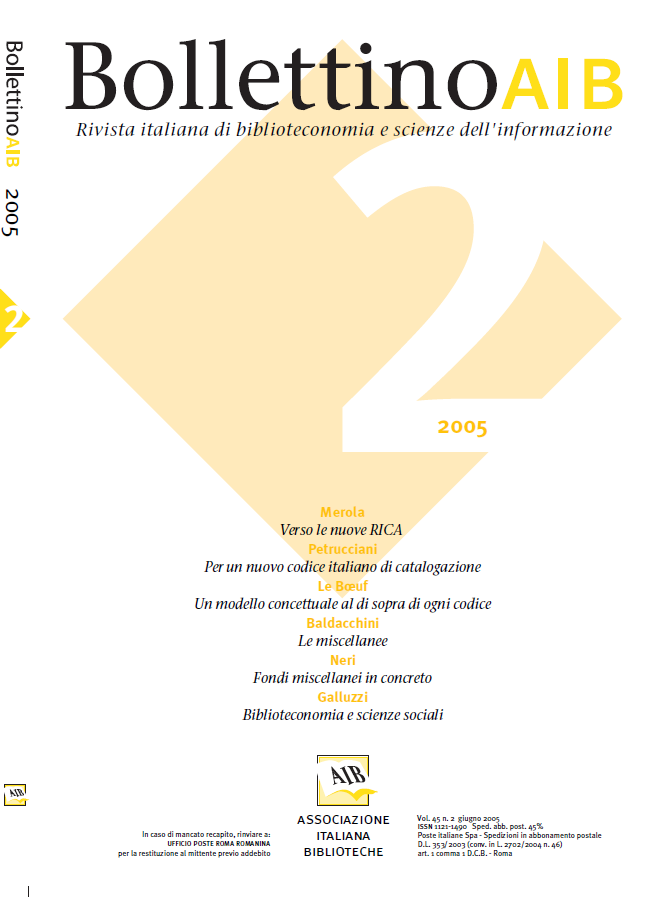"In uno corpore continentur". Miscellanies. For a joint approach to a problem of librarianship of antique books
Main Article Content
Abstract
The custom of binding a number of written documents into miscellanies is presumably as old as the code. Very soon miscellanies were characterized by a greater or lesser organic unity. Although some reliable scholars sustain that miscellaneous books were rejected in the beginning by printers, in time the practise involved even the new Guttenberg products. A manual such as that of Naudé (1627) recommends preparing these artificial volumes, in order to better safeguard lesser material in particular. A century later, Volpi in the Varie avvertenze (Various warnings) testifies that the practise is widespread in public and private libraries. But at the end of the nineteenth century Biagi and Fumagalli, while criticizing Petzholdt's positions, essentially propose abandoning the custom of preparing miscellaneous volumes. In more recent Italian librarianship literature, there have not been many contributions on the subject. That of Francesco Barbieri in 1961 should be noted. This was focused on the advisability of maintaining miscellanies intact inasmuch as rightly considered a unique historical document, with the sole exception of those cases in which the joint existence puts the conservation of the individual documents at risk. From a cataloguing viewpoint, sufficient thought has not yet been given to the need for a specific level of overall description for this type of book, even though the proposal, born within the AACR sphere, of Collection level cataloguing could have precisely artificial miscellanies as its field of application. The serendipity practised and practicable in the miscellanies actually represents an added value that can be considered a sort of paradigm of the entire library.
Article Details
Section
Articles

This work is licensed under a Creative Commons Attribution-ShareAlike 4.0 International License.
